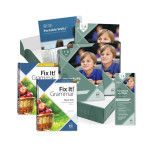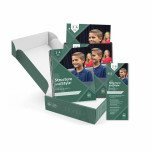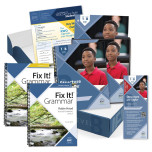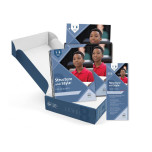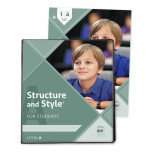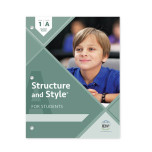We use cookies to make your experience better. To comply with the new e-Privacy directive, we need to ask for your consent to set the cookies. Learn more.
Restructured and re-filmed in 2020, this Structure & Style series features incremental instruction, humor, and ease of use. The engaging teaching of Andrew Pudewa continues to win students’ hearts and minds and transform them into accomplished writers. This popular series is still focused on both the structure and the style of exceptional writing. Most years include 9 units of writing instruction (Year 1, Level A contains 7 units). There are still three levels of instruction (Level A for Grades 3-5; Level B for Grades 6-8; and Level C for Grades 9-12).
Each Structure and Style for Students course (seven total) provides a year (24 weeks) of video instruction and effective writing lessons. The curriculum provides writing assignments, vocabulary words, and literature suggestions, all neatly outlined in weekly lesson plans. Basic packages include Teacher Manual, Student Packet, Binder, and Videos—available in either DVD or Forever Streaming packages. Additional packages include the Basic Plus, which includes a corresponding grade level of Fix-It Grammar and Portable Walls. The Premier package includes all the previous items plus A Word Write Now and the Teaching Writing Structure and Style Seminar (Forever Streaming videos, seminar workbook, and Premium Membership. This second edition version of the Teaching Writing: Structure & Style includes twelve forever streaming videos and a one-year access to additional online resources like sample student workshops, checklist generator, audio MP3 downloads of some of Andrew Pudea’s conference talks, and more. The Premier package includes all the previous items plus A Word Write Now and the Teaching Writing Structure and Style Seminar (Forever Streaming videos, seminar workbook, and Premium Membership.
The basic instructional units in Structure and Style for Students (SSS) begin in Year 1, Level A: Note Making/Outlines; Writing From Notes; Retelling Narrative Stories; Summarizing a Reference; Writing From Pictures; Summarizing Multiple References; Writing From Pictures; Summarizing Multiple References; and Inventive Writing. After Year 1 Level A, each level will review these seven writing styles and add Essay Writing and Formal Critique. Topics are introduced, reviewed, and expanded on with each course. An Introduction to Poetry is covered in three courses – Years 1 and 3 of Level B, and Year 1, Level C.
The Teacher Manual provides a course scope and sequence, weekly lesson plans, and suggestions for adapting the 24-week schedule for various class schedules (one day a week, two or three days, etc.). Reduced copies of student material are accompanied by teacher notes and suggested answers. Weekly Lesson Plans include teacher preparation, literature suggestions, use of videos, goals/objectives, copies of notes from video content, non-reproducible copies of source texts and model charts, notes on organizing papers into binders, and homework assignments.
Purchase of the Teacher Manual (by itself or with any of the
packages) allows its owner to access the pdf downloads for the particular
course for use within their own family. Download instructions are included in
the TM. Downloads vary with each course but tend to include reproducible
checklists for writing assignments, student samples, and an adaptation of the 24-week
schedule to 30 weeks.
The Student Book/Packet provides all student papers for the course. These packets are reproducible for use by multiple children within the purchaser’s family. For co-ops or small groups, each family is required to purchase a Student Book. These include weekly overview pages, source texts, model charts (forms that students use to complete assignments), and composition checklists.
The Binder (one-inch binder plus eight tabbed dividers) provides an easy-to-use organizational system. Instructions for setting up the binder are included in the Student Book.
The Videos provide 24 two-part instructional segments delivered by Andrew Pudewa in a classroom setting. They are available as part of the packages in either DVD form or through Forever Streaming. Forever Streaming videos are available from the IEW website as long as they are needed by the original purchaser, but are nontransferable.
